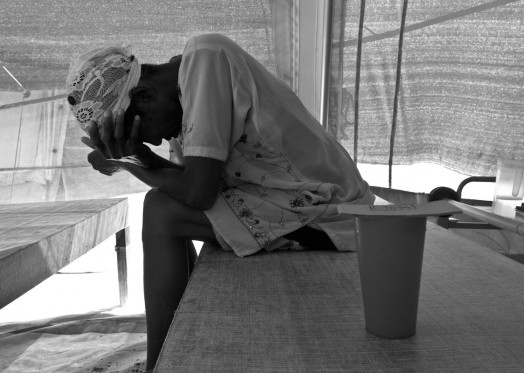Haiti Nightmare

Back to Haiti. Almost three years after the earthquake it’s still a desperate place. Hurricane Sandy has brought more misery and destruction, with dozens of victims swept away by the floods. I travelled north to Cap Haitien where another tropical storm hit the battered town last weekend: roads were cut, people were shaken, houses were flattened and corpses surfaced in the mud. Then I returned to Port au Prince on a Tortug’Air twin engine old plane. The city is a hell: a broken society, an endemic emergency. The UN mission doesn’t seem to make any difference. Reconstruction is slow and rubble is everywhere. Electricity is off most of the day. Traffic jams block the streets. Plastic waste clogs the sewages and the canals: the whole city is an open air dumping ground. At Wharf Jeremie there are scavangers searching for metal scraps under mountains of rubbish, digging holes four metres deep. Others burn wires and cables to extract the copper. Gang warfare is on again in the slums. The pandillas in Cité Soleil are fighting to control the business of the poors and you hear gun shots in the night.
Cholera is also taking its toll. I saw hundreds of cholera stricken patients in the hospitals. But people die mostly of curable deseases, malnutrition, aids, car accidents and street violence. Every Thursday father Rick goes to the Central Hospital’s morgue and fills two trucks of corpses: no one else will do it. There’s no money for the burials, and most of the dead have no names. So he wears plastic gloves, swallows a shot from a bottle of ruhm, lights a cigar and gets down to the job, with the help of a few volunteers. It’s a grim task. The room is only lit by a bulb and the dead are crammed in piles on the floor and on metal shelves: it reminds me of the nazi camps. They begin with the babies, wrapped in cloth and tape: some so small you pick’em up with one hand and stick up to fifteen in a single bodybag. Then come the blood soaked bodies of young boys and girls, some naked, some wearing their school uniforms. Now you need another shot of ruhm, so you can stand the foetuses, the body parts, the rotten flesh. When the trucks are finally loaded, Rick drives them to the common graves: an empty ground outside town on the Gonaive road where a makeshift brass band awaits. They start playing Verdi’s “Va’ pensiero”, and lay them all to rest.
* Father Rick Frechette is a physician and missionary who has served thousands of impoverished children and orphans for more than three decades. He heads the Haitian branch of NPH (Nuestros Pequeos Hermaños, Our little brothers and sisters), represented in Italy by Fondazione Francesca Rava (www.nph-italia.org).
(Update. A student was shot and killed yesterday during a protest over the killing of another student by a policeman last Saturday. Some say UN troops fired in the direction of the crowd. A big student rally is called for tomorrow. The Geneva based IOM says the number of confirmed cholera cases stands at 3,593 after the passage of Hurricane Sandy. Nearly three dozen designers showed off their latest creations at Haiti Fashion Week, which ended Sunday.)





